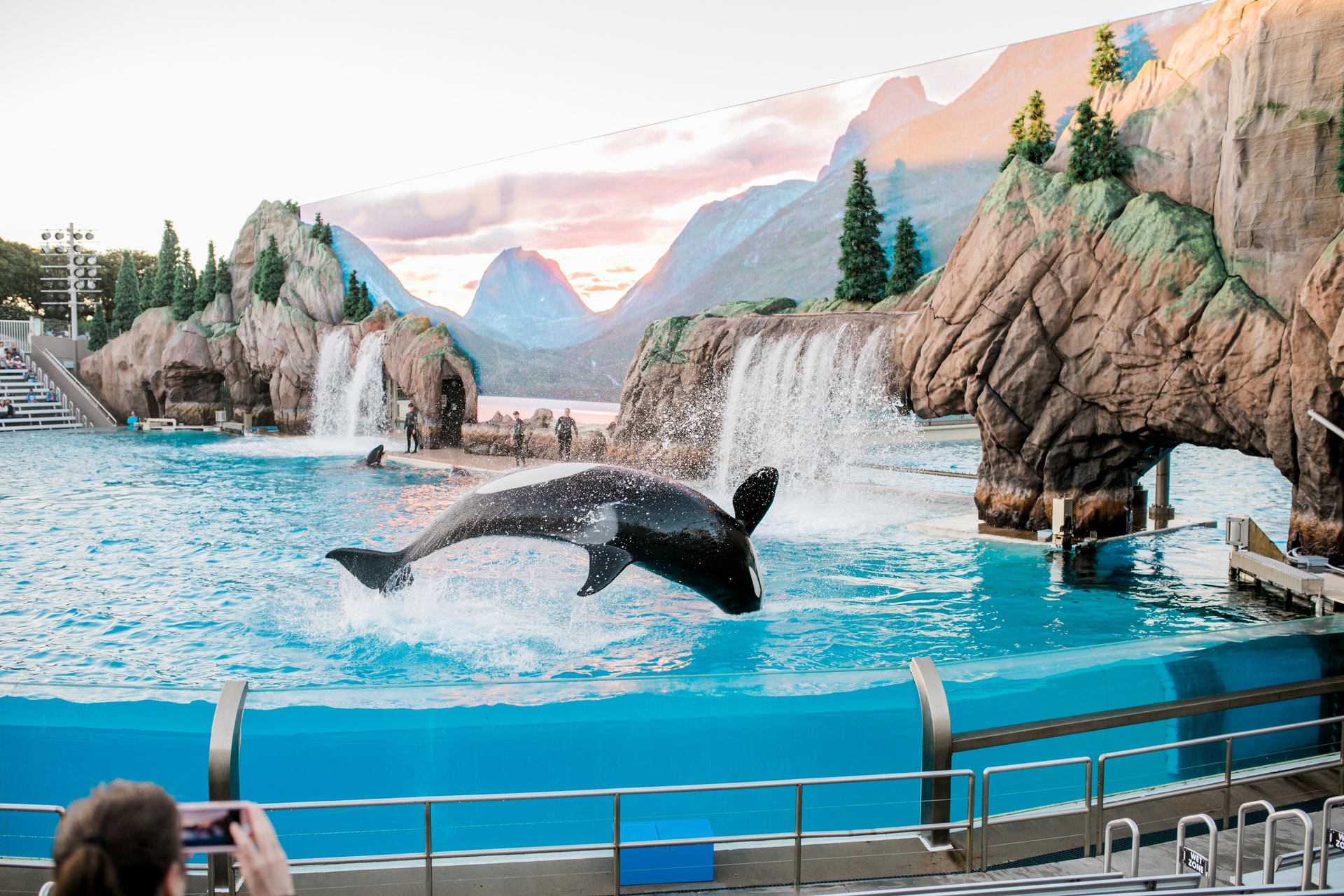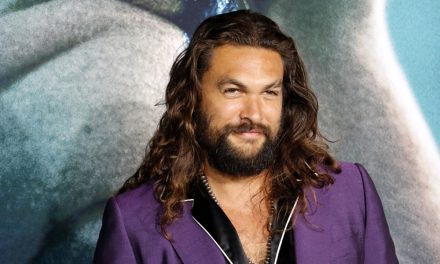SEAWORLD has long battled claims about the conditions its captive killer whales are kept in, including allegations they suffer such acute stress they become ill, aggressive and die early.
Seaworld recently came under fire again after Virgin Holidays ended partnerships with attractions like SeaWorld and Discovery Cove and announced they would no longer include packages which involve captive whales or dolphins.
RELATED STORY:
It’s incredibly welcome news for many, who argue the 36 foot pools the killer whales are kept in are inhumane. John Hargrove and Jeffrey Ventre, former SeaWorld trainers, agree and have told multiple sources that this is just the tip of the iceberg.1,2,3 They claim whales at the popular theme parks were routinely drugged and deprived of food and even self-harmed as a result of the psychological trauma they suffered.
Jaw-popping and self-mutilation
Jeffrey Ventre, now 55, was initially thrilled when he landed the role of SeaWorld trainer in 1987, saying:
I was initially happy as it’s pretty hard to do because so many wanted to be trainers, and I felt honoured to be working with marine mammals.1
However, over the next eight years, Jeffrey (who said his job was more like a stunt man performing with captive animals using food deprivation as a motivator) discovered the horrifying truth. He came to notice the whales displayed signs of extreme distress. He says:
They would grind their teeth or chew concrete out of boredom, causing dental damage, and “raking” – scratching each other with their teeth – was common.
There was a lot of self-mutilation. Jaw popping was regularly seen – it’s a threat display between two orcas.1
Jeffrey claims the whales were medicated daily for medical conditions – but also to control their behavior. He explains:
The whales and dolphins were stressed and this caused stomach ulcers.
So they got meds for that. They also got chronic infections, so they got antibiotics. They were also sometimes aggressive or hard to control so they could be given Valium to calm their aggression.
All whales were getting vitamins packed in their fish. Several got daily antibiotics, including Tilikum, for chronic teeth infections.
Inbreeding was also common, with John recalling a whale called Taku – Tilikum’s son – mating with his own mother.1
RELATED STORY:
John began his killer whale training in 1993, when he was 20, and resigned in 2012. He remains deeply affected by what he saw, explaining captivity cut the whales’ lives short. He added:
I worked with some whales that were on medication every day of their life and have personally watched whales die at very young ages from disease. It was the most difficult decision in my life to have to walk away from the whales I loved to be able to become a whistle-blower and expose the industry.1
Killed and dismembered
SeaWorld killer whale Tilikum was connected to the death of three people. He became the focus of 2013 documentary Blackfish.
RELATED STORY:
On February 24 2010 trainer Dawn Brancheau, 40, who had worked at SeaWorld for 16 years, died at the Orlando park after Tilikum pulled her into the water by her ponytail. She suffered “multiple traumatic injuries” and was held under the water until she drowned. John was devastated by her death. He said:
I was personal friend with Dawn Brancheau for nine years before Tilikum killed and dismembered her.1
Dawn is not the only human casualty.
Before he arrived at SeaWorld, Tilikum was involved in the death of another trainer. The incident happened in 1991 at Sealand of the Pacific, a marine park in British Columbia, Canada (that has since closed) after the trainer accidentally fell into a tank with Tilikum and two other whales. Then in 1999, trespasser Daniel Dukes was found dead after entering Tilikum’s tank at night.
‘A whale grabbed me and held me under’
Jeffrey and John said attacks on trainers were common because stress made the orcas hyper-aggressive. But they said many of the incidents weren’t reported, adding:
I was involved myself and witnessed other trainers getting dunked, and shoved by the whales, and Taku rammed me underwater. This was never reported. But ‘stuff’ like this was a common occurrence.
I worked with 20 different orcas in my career and swam with 17 of them. The three I didn’t swim with were because they were classified as ‘non-waterwork whales’ and no trainer swam with them. I had 10 major ‘waterwork aggression’ incidents during my career where whales grabbed me in their mouth and held me under.1
RELATED STORY:
Jeffrey stated that trainers were forced to lie to the public about the whales, passing off injuries they sustained from captivity as normal. One such injury is dorsal fin collapse, where the dorsal fin leans to one side.The reason this happens isn’t totally known, but scientists have suggested it’s due to stress and reduced activity. Jeffrey explains:
We were also given scripts for educational shows that were filled with errors that were actually public relations talking points.
For example, when we spoke to kids we were told to tell them that killer whales live 25 to 30 years on average. This is not true.
We also told the public that dorsal fin collapse was genetic or a fairly regular occurrence in the wild, which is isn’t.1
In the wild, killer whales live to between 50 and 80 but in captivity their life expectancy is around 17 years.
Still feel guilt
Jeffrey left the job in 1995 and John quit in 2012. Both men realize the negative impact the industry was having on both trainers and whales.
RELATED STORY:
John now campaigns for better conditions, saying:
By speaking out it helps with the guilt I still keep buried inside me for being able to walk away and go on with my life when those whales I loved more than anything, could not.1
Jeffrey, a medical doctor and specialist in physical medicine and rehabilitation, now lives in Washington. He campaigns against keeping orcas in captivity, and in 2016 SeaWorld announced they were ending their breeding program.
Kyara was the last bred killer whale at Seaworld. She was born in April 2017 and died just three months later from suspected pneumonia.
Twenty-two orcas now remain at the park’s Orlando, San Antonio, and San Diego attractions. The youngest Amaya was born in 2014. Jeffrey said:
It’s hard to significantly improve their lives in small pools as most of the issues of deconditioning, broken teeth, hyper-aggression, mortality and morbidity are a function of captivity.
A step in the right direction is to a protected sea pen where they have an entire cove to play, interact with kelp and fish, be together and not performing shows, but also an area where they can get teeth flushings and medical care.1
Outspoken Advocate
John said Seaworld recently began threatening him with legal action. He said:
Luckily, I have great attorneys at Macmillan. I also hired my own legal team because I know SeaWorld very well. They are bullies who for decades have silenced trainers who threatened to speak out. But I’m not going to be silenced. I have a right to speak about my life and my experiences, and I’m not going to let a corporation like SeaWorld try to shut me up. I live in America, and I have a First Amendment right. So I made sure I have the people on my team to protect those rights.2
RELATED STORY:
SeaWorld says:
These are many of the same tired, false and misleading claims uninformed activists and disgruntled former employees have been repeating for years.
Our animal welfare practices are accredited and reviewed by organizations such as American Humane, the Association of Zoos and Aquariums, Alliance of Marine Mammal Parks and Aquariums and U.S. Department of Agriculture’s Animal and Plant Health Inspection Service, so any notion that SeaWorld abuses animals is categorically false.
The fact is, no one does more to protect marine mammals and advance cetacean research, rescue and conservation than the more than 1,000 dedicated animal care experts at SeaWorld.1
We long for the day when these beautiful and majestic creatures can swim freely in the ocean – THEIR natural habitat. Sadly, humans are polluting their waters – their homes – with toxic chemicals and plastics. Tears fall from my eyes as I write this. We must join together and stop this madness.
Source:





















